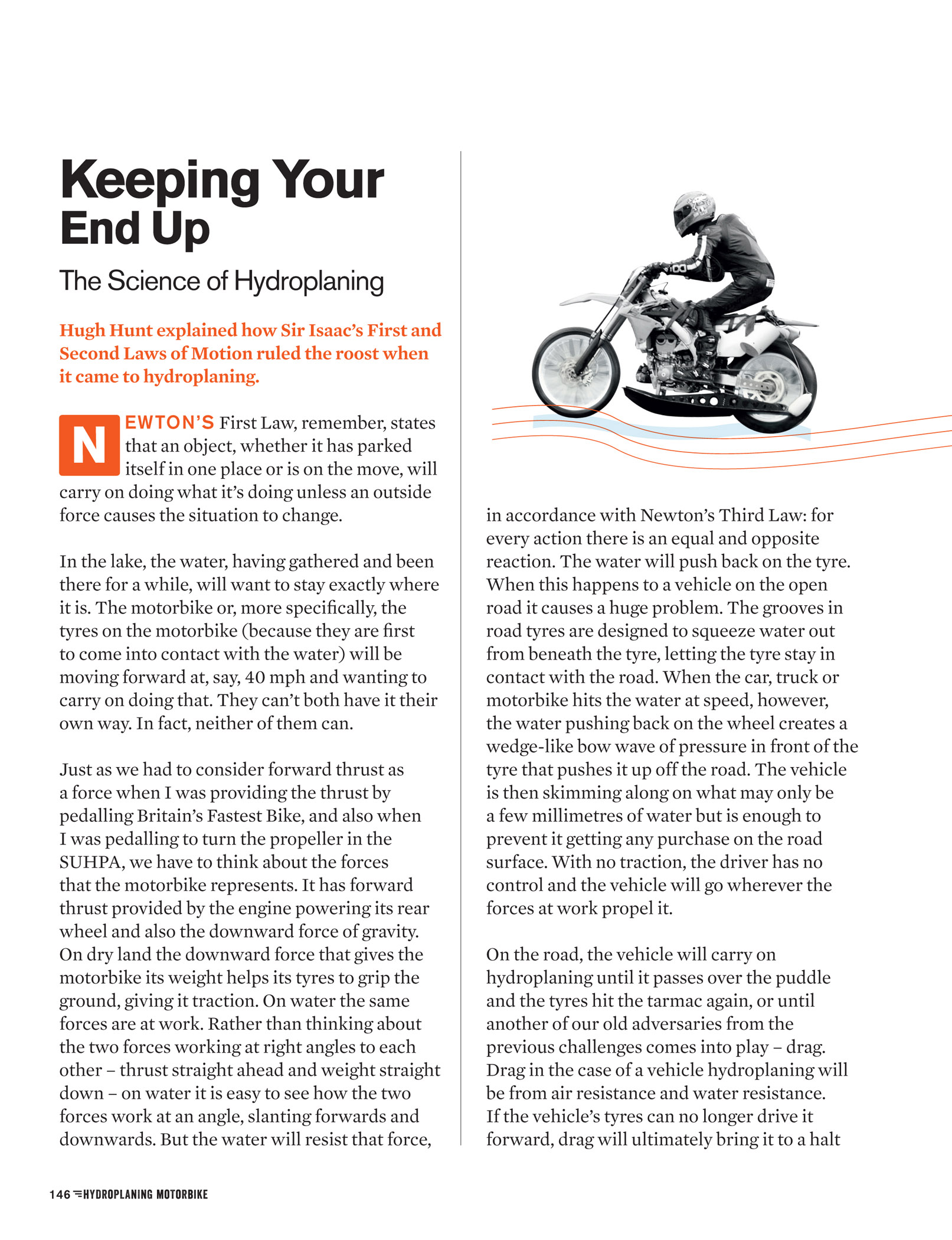
Keeping Your
End Up
The Science of Hydroplaning
Hugh Hunt explained how Sir Isaac’s First and
Second Laws of Motion ruled the roost when
it came to hydroplaning.
EWTON’S First Law, remember, states
that an object, whether it has parked
itself in one place or is on the move, will
carry on doing what it’s doing unless an outside
force causes the situation to change.
N
In the lake, the water, having gathered and been
there for a while, will want to stay exactly where
it is. The motorbike or, more specifically, the
tyres on the motorbike (because they are first
to come into contact with the water) will be
moving forward at, say, 40 mph and wanting to
carry on doing that. They can’t both have it their
own way. In fact, neither of them can.
Just as we had to consider forward thrust as
a force when I was providing the thrust by
pedalling Britain’s Fastest Bike, and also when
I was pedalling to turn the propeller in the
SUHPA, we have to think about the forces
that the motorbike represents. It has forward
thrust provided by the engine powering its rear
wheel and also the downward force of gravity.
On dry land the downward force that gives the
motorbike its weight helps its tyres to grip the
ground, giving it traction. On water the same
forces are at work. Rather than thinking about
the two forces working at right angles to each
other – thrust straight ahead and weight straight
down – on water it is easy to see how the two
forces work at an angle, slanting forwards and
downwards. But the water will resist that force,
146 HYDROPLANING MOTORBiKe
in accordance with Newton’s Third Law: for
every action there is an equal and opposite
reaction. The water will push back on the tyre.
When this happens to a vehicle on the open
road it causes a huge problem. The grooves in
road tyres are designed to squeeze water out
from beneath the tyre, letting the tyre stay in
contact with the road. When the car, truck or
motorbike hits the water at speed, however,
the water pushing back on the wheel creates a
wedge-like bow wave of pressure in front of the
tyre that pushes it up off the road. The vehicle
is then skimming along on what may only be
a few millimetres of water but is enough to
prevent it getting any purchase on the road
surface. With no traction, the driver has no
control and the vehicle will go wherever the
forces at work propel it.
On the road, the vehicle will carry on
hydroplaning until it passes over the puddle
and the tyres hit the tarmac again, or until
another of our old adversaries from the
previous challenges comes into play – drag.
Drag in the case of a vehicle hydroplaning will
be from air resistance and water resistance.
If the vehicle’s tyres can no longer drive it
forward, drag will ultimately bring it to a halt
forward, drag will ultimately bring it to a halt